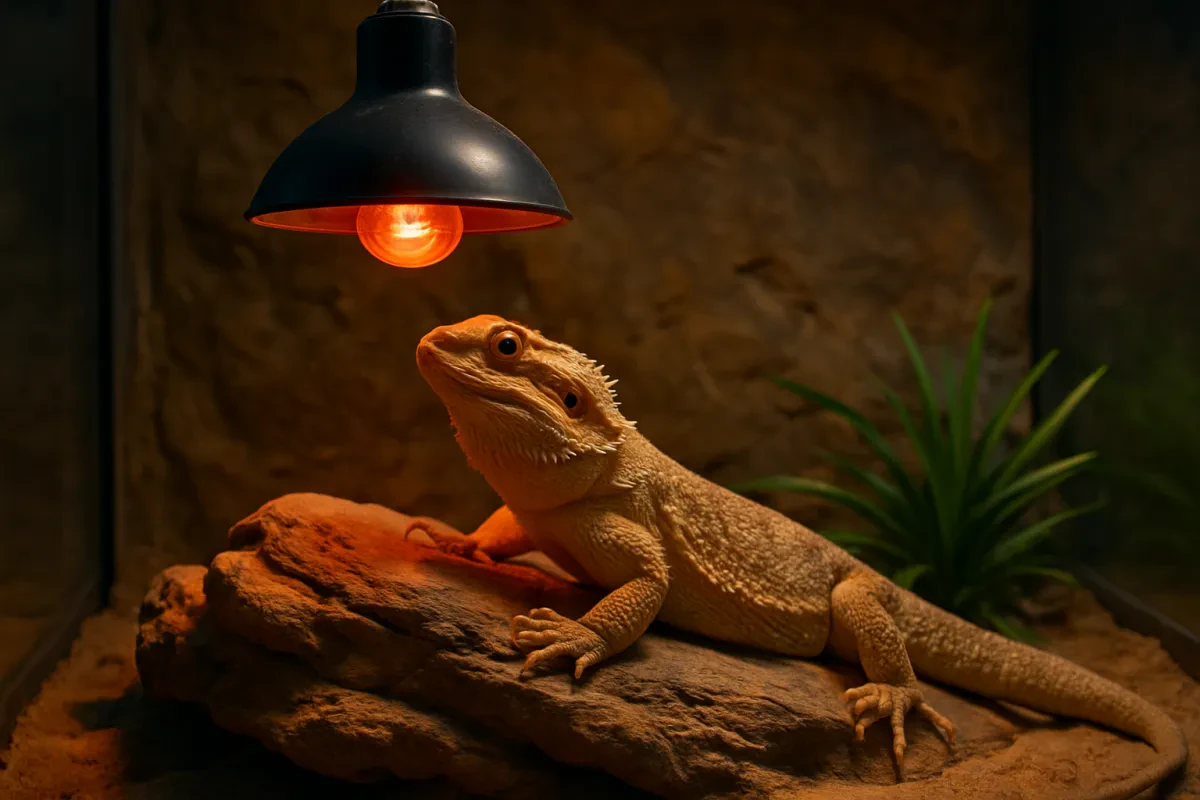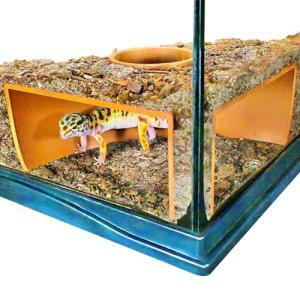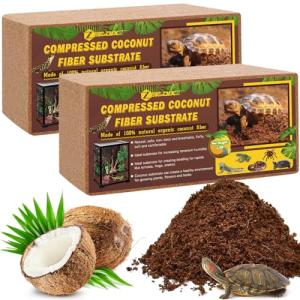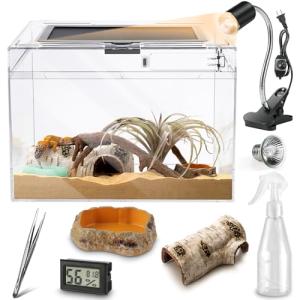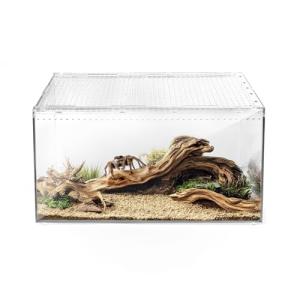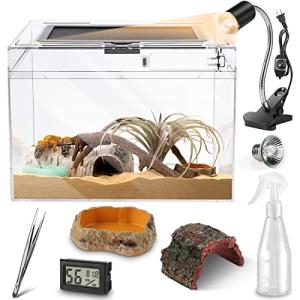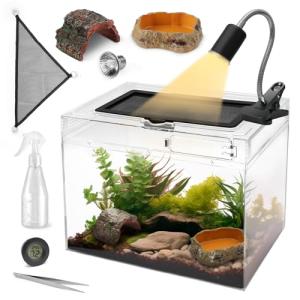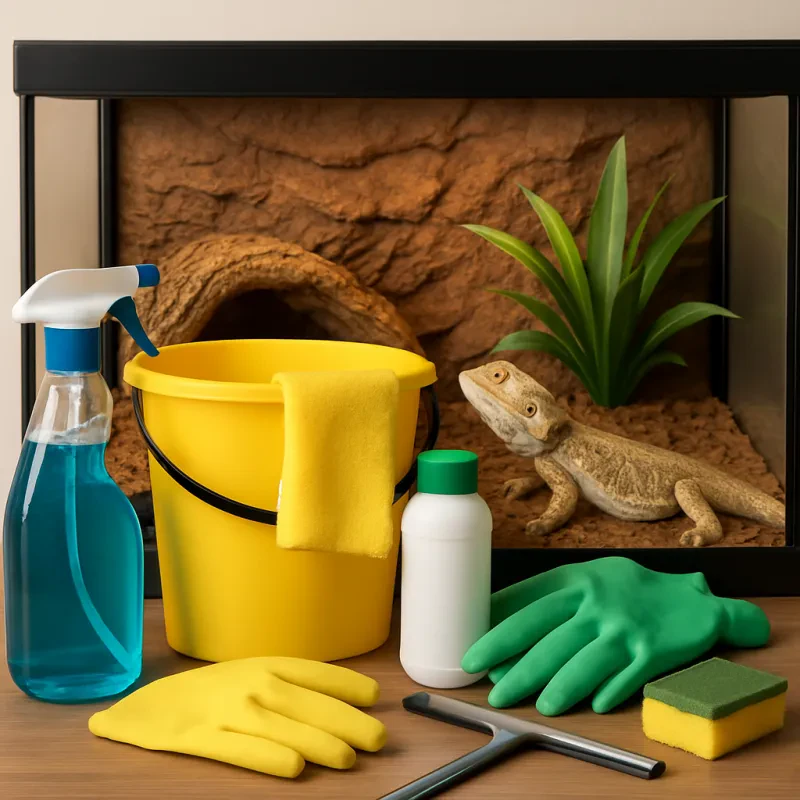When it comes to reptile habitat heat regulation, choosing the right heat source is crucial for your pet's health. Reptiles rely on heat to digest food and stay active, so you want options that are safe and effective. Here’s a quick rundown of dependable heat sources to keep your cold-blooded buddies happy.
First up, heat mats are a great choice for creating a warm spot in your enclosure. They warm the substrate from below, providing a cozy hideout for your reptile. Just make sure to get a mat that’s appropriately sized for your tank, and always use a thermostat to prevent overheating.
Heat lamps are another popular option. They mimic natural sunlight, helping your reptile bask and soak up rays. Look for a lamp with a wattage that suits your tank size. Plus, it’s a good idea to install a timer so you can control the light cycle easily, simulating day and night for your pet.
Ceramic heat emitters are perfect for nighttime heating. They provide warmth without light, letting your pet sleep peacefully while staying cozy. Just hang these high up in the enclosure and ensure it’s set up with a good thermostat to keep temps steady.
Whatever heat source you choose, make sure to monitor temperatures regularly with a reliable thermometer. Proper reptile habitat heat regulation will ensure your pet stays healthy and active, so you can both enjoy your time together to the fullest!
Best Thermostats for Your Tank
When it comes to reptile habitat heat regulation, having the right thermostat can make all the difference. A good thermostat helps you maintain a stable temperature, keeping your scaly friend comfortable and healthy. Here are some of the best options on the market.
The Inkbird Thermostat ITC-308 is a favorite among reptile owners. It’s easy to set up and features a dual relay output, which means you can use it with both heating and cooling devices. The digital display shows you the current temperature and makes adjustments simple. Plus, it comes with a waterproof sensor, so you don’t have to worry about accidental spills.
If you’re looking for something a bit fancier, check out the Habor Digital Thermostat. This one has a sleek design and offers precise temperature control. You can set specific temperature ranges, and it will alert you if the temperature goes outside those limits. It’s perfect for those who want to keep their reptile habitat heat regulation spot on without constant monitoring.
For those who love the tech side of things, the Zoo Med ReptiTemperature Control Thermostat might be just what you need. It allows you to control both heating mats and basking lights with ease. The digital readout is clear and helps you keep an eye on your habitat’s temperature. Plus, it’s designed to be super user-friendly, so anyone can get it set up in no time!
Finally, consider the ThermoPro TP65 Digital Thermometer and Hygrometer. While technically more of a thermometer, it works incredibly well for monitoring your reptile habitat heat regulation. It shows both temperature and humidity, which is essential for keeping your reptile happy and healthy. It’s wireless, so you can place the sensor where it’s needed most without fussing with cords.
Reptile Cave Hide for Snakes and Geckos
Give your snakes and geckos a cozy spot to hide and feel secure
Product information
$17.95
Product Review Score
4.46 out of 5 stars
206 reviewsProduct links
Easy Tips for Even Heating
When it comes to reptile habitat heat regulation, getting that perfect temperature can be a bit tricky. Fortunately, there are some easy tips to keep the heat consistent throughout the habitat. First off, consider investing in a good quality heat source. There are various options like heat lamps, under-tank heaters, and even ceramic heat emitters. Pick one that suits your reptile’s needs and the size of their space.
Placement matters a lot, too. Make sure your heat source is set up correctly. For instance, if you’re using a heat lamp, position it above the basking area, but give your pet enough space to cool off if they need to. You want a warm basking spot for them to soak in the heat, but also cooler areas so they can regulate their own body temperature.
Don't forget to monitor the temperatures! Using a reliable thermometer, check both the warm and cool sides of the habitat. You want to make sure there’s a nice gradient. If it’s too hot or too cold in any spot, your reptile might get stressed. It’s all about balance.
If you find yourself dealing with temperature fluctuations, consider using a thermostat to link it with your heating source. This can really help maintain a stable environment. And remember, always keep an eye on how your pet is acting. If they’re hiding too much or seem lethargic, it might be time to tweak the setup a bit.
Coconut Fiber Substrate for Reptile Terrariums - 2 Pack
Create a cozy and natural habitat for your reptiles with this premium coconut fiber substrate
Product information
$13.75 $12.34
Product Review Score
4.29 out of 5 stars
227 reviewsProduct links
Signs Your Habitat Needs Attention
Your reptile habitat heat regulation is super important for your pet's health. Sometimes, things can go a little off-track, and it’s up to you to spot the signs that your habitat needs some TLC. Here are some key indicators to watch for.
First up, check on your reptile's behavior. If your pet seems lethargic or is hiding more than usual, it might be feeling too hot or too cold. Reptiles rely on external heat sources, and if your habitat isn’t balanced, they can struggle to regulate their body temperature. Keep an eye out for unusual basking patterns too. If your reptile spends all its time basking, it could mean it’s not getting the heat it needs where it usually hangs out.
Next, look at the temperature readings. Having a reliable thermometer is a must! If the readings show drastic fluctuations or are way off from where they should be, it’s time for an adjustment. Remember, different reptiles have different heat requirements, so make sure you know what your specific pet needs.
Finally, don’t forget about humidity levels. A reptile habitat that’s either too dry or too moist can lead to serious health issues. If you notice your pet's skin looking dull or if they’re shedding improperly, poor humidity could be the culprit. Adjust your humidity levels to fit your pet’s needs for healthy sheds and a happy life.
Keeping an eye on these signs can help you maintain excellent reptile habitat heat regulation. Your pet's well-being depends on it! Regular checks and adjustments can make all the difference in keeping your scaly friend healthy and active.
